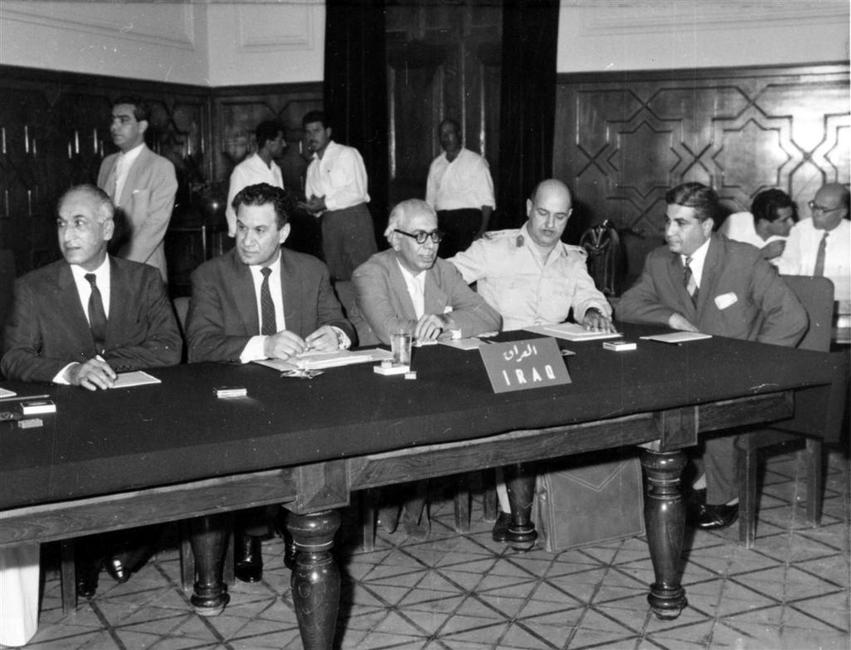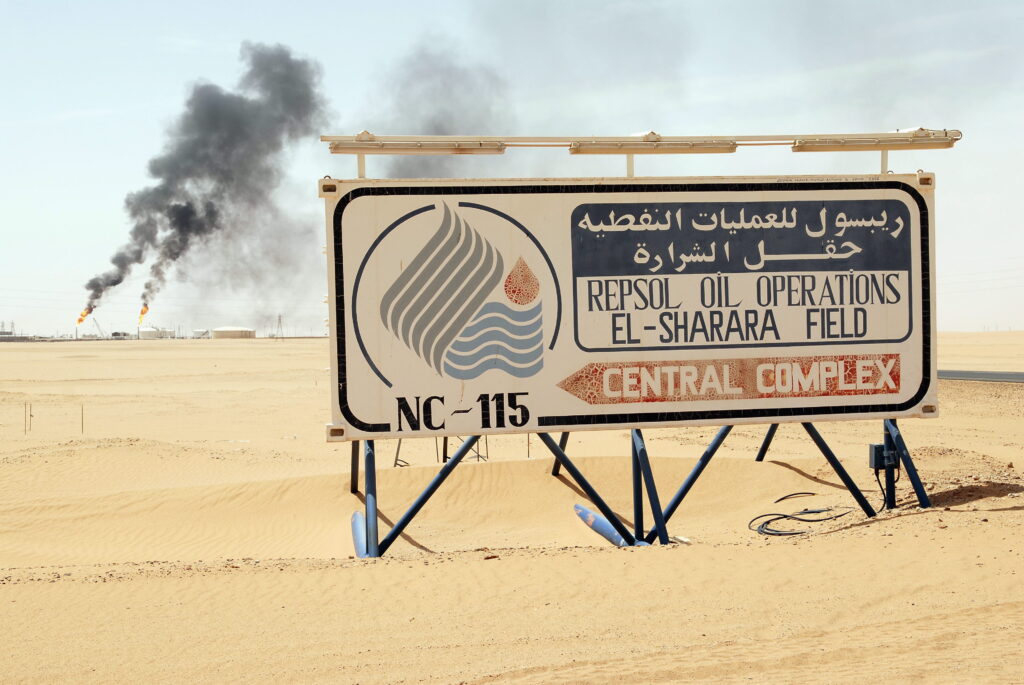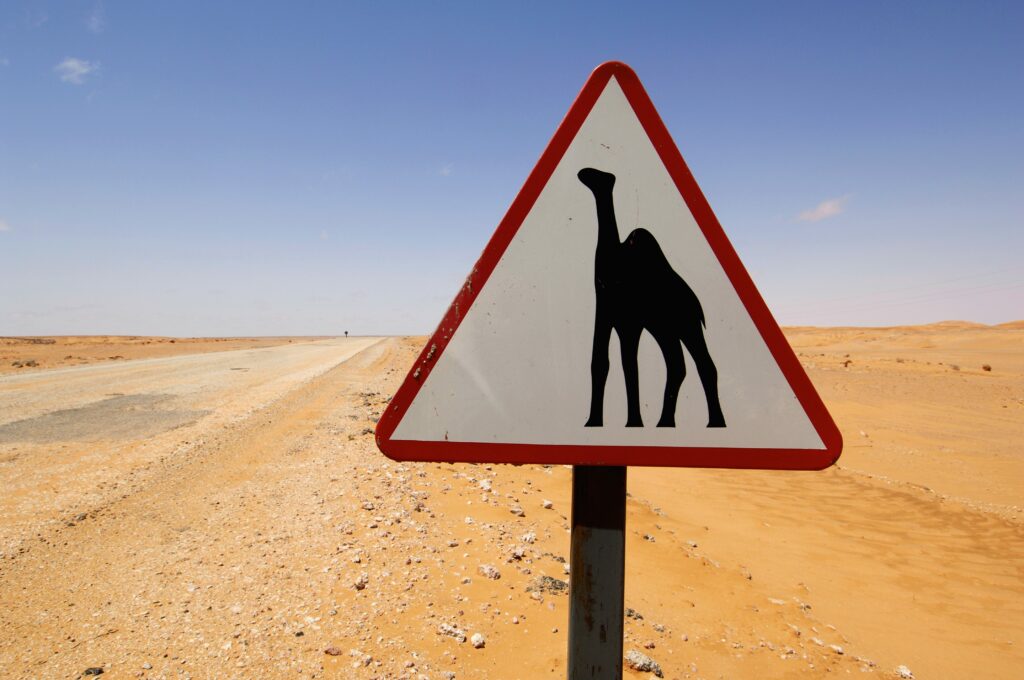The international backdrop. The Seven Sisters and Opec

The world’s petroleum industry was dominated after 1945 by a small group of major oil companies known collectively as the Seven Sisters. They owned most of the oil reserves in the USA and in other big producer nations, such as Venezuela, Indonesia and Middle Eastern countries. That allowed them to determine how much oil should be produced and where, its transport and processing, its cost and the markets it would be sold in.
Western dominance
Great power over a strategically and economically important raw material was thereby concentrated in a few hands. Several of these majors had been part of US magnate John D Rockefeller’s Standard Oil group, which was broken up by anti-trust action in 1911. These subsidiaries grew independently into very powerful entities. One example was Esso, or Exxon as it is called in the USA. Another was Mobil, a third was Chevron, and the fourth was Standard Oil Co of California. The remaining Seven Sisters were Anglo-Dutch Shell, British Petroleum (BP) and America’s Texaco.
When oil consumption really began to take off in the mid-1950s, these companies controlled almost 90 per cent of production and 90 per cent of sales in the western world outside the USA. Within the USA, they owned about half the oil reserves and accounted for almost as much of the sales.
Two decades later, the Seven Sisters were responsible for 61 per cent of crude oil production and 56 per cent of sales in the western world. But nationalisations and new competitors eventually began to erode their power. The producing countries increasingly questioned the justice of these international companies continuing to exercise full control of such an important raw material.
Other industries may exist which have fallen into the hands of a equally small group of multinationals. But none have been controlled by such a limited clique for so long. That is unusual, given the important role played by the oil sector in the global economy.
The growth in consumption after 1945 meant that the USA ceased to be self-sufficient in oil. Growing quantities were imported from the Middle East, where crude virtually flooded out of the desert. Even there, however, control rested with the majors. Countries without their own oil companies, such as Germany, Italy, Austria and in Scandinavia also tried to enter the market and become Middle Eastern producers, but this proved virtually impossible.
Some countries nevertheless managed to alter this position. ENI was established as an Italian national oil company in 1953, but found conducting business to be difficult. That was illustrated by the fate of Enrico Mattei, the politician responsible for ENI’s creation, who garnered many enemies and finally suffered what is presumed to have been assassination by a bomb.
Nationalism was on the increase in Iran after 1945. The Iranian state tried to negotiate higher oil prices with the majors, but without success. It then nationalised its oil reserves in 1951, but failed to benefit from this move. The Iranians lacked the necessary technological skills to maintain production. As equipment broke down and could not be repaired, the wells had to be shut down. Moreover, the buyer countries reacted by boycotting Iran. With help from the CIA, the role of the Shah was strengthened by a coup in 1953 and oil production recovered. The Iranian ruler remained an ally of the USA and thereby of the American majors until he was deposed by Ayatollah Khomeini in 1979, and much of the country’s oil production was renationalised.
Opec created

Other Middle Eastern countries were also dissatisfied with the dominant role of the majors. The Organisation of the Petroleum Exporting Countries (Opec) was established in 1960, initially with five members – Venezuela, Saudi Arabia, Iran, Iraq and Kuwait. Qatar joined the year after, while Libya and Indonesia signed up in 1962. When the oil crisis of 1973 was sparked by the war between Israel and Egypt/Syria, Opec had 12 members following the accession of Gabon, Ecuador, Nigeria and the United Arab Emirates.
The organisation had several objects, including work for stable oil prices and to prevent any changes being made to these without prior consultation with all Opec members. A second aim was to safeguard revenues by such means as regulating production, which would ensure that petroleum resources lasted longer. Third, the members undertook to support each other if the majors tried to put pressure on individual countries.
Opec established its headquarters in the Austrian capital, Vienna. For a long time, the oil companies refused to negotiate with it as a common representative for the oil producers. They preferred to talk to each country separately. However, they changed their views after a bruising encounter with Libya.
Libya pushes prices up

The producer country pushing hardest for an oil price increase was Libya, a young oil nation which had initially sought to attract the companies with favourable tax and licensing deals. Bordering on the Mediterranean, this north African country was close to European markets and very favourably positioned in 1967 when the Six-Day War involving Israel and Egypt closed the Suez Canal. That meant all oil shipments to Europe from Saudi Arabia, Iran and Iraq had to take the long way round Africa.
Colonel Muammar Al-Gaddafi, a committed Arab nationalist, and a group of other officers staged a coup in Libya in 1969. After US and British bases in the country had been nationalised, attention turned to the oil companies. Instead of throwing them out, however, the new regime initiated negotiations on increasing Libya’s oil revenues. One of the smaller US companies, Occidental, was heavily dependent on Libyan oil and yielded to the pressure. Texaco gave way next, followed by everyone except Shell. The latter’s oil fields and facilities were thereby nationalised.
Libya’s success in forcing the oil companies to submit encouraged the other producers. Opec was now keen to take coordinated action in order to boost tax revenues by at least 55 per cent. That demand prompted 23 oil companies to close ranks. They would now only negotiate collectively, and only with Opec. The aim was to avoid individual companies being squeezed as they had been by the Libyans.
However, the oil company demands infuriated the Gulf states. After tough negotiations, the companies and the Opec members nevertheless succeeded in reaching a five-year agreement. The producers were to receive USD 0.35 more per barrel, plus compensation for annual inflation. Neither Libya nor Algeria thought this deal was good enough, and secured an agreement with even better terms for the countries bordering the Mediterranean. This way, oil prices were kept under control with only a small increase. That was particularly in line with the interests of the consuming countries.
More state oil companies
The desire for national control was therefore on the rise during the 1960s. A large number of states wanted to limit the power of the international majors by establishing their own oil companies.[REMOVE]Fotnote: Francis Sejersted, Systemtvang eller politikk: Om utviklingen av det oljeindustrielle kompleks i Norge (Oslo: Universitetsforlaget, 1999): 28.
That was the position when the nations around North Sea emerged as oil producers. The UK started offshore production of gas in 1967 and oil in 1975, while Norway became an oil producer in 1971 – the year before Det norske stats oljeselskap a.s, later Statoil, was established.

